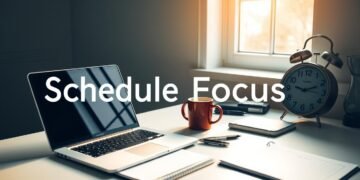Have you ever wondered how small, consistent changes can transform your focus and mental clarity? A structured program combining breathing, visual, and audio techniques might be the answer. This evidence-based approach builds on clinical psychology research to help you achieve measurable improvements in mental wellness and cognitive performance.
Studies show that participants in 4-dose ATT groups outperformed control groups in areas like working memory and attentional disengagement. These techniques are not just theoretical—they have immediate practical applications for everyday life. Whether you’re looking to enhance productivity or reduce stress, this program offers a clear path forward.
Key Takeaways
- Combines breathing, visual, and audio techniques for better focus.
- Based on clinical psychology research for proven results.
- Immediate practical applications for mental wellness.
- Supports improved working memory and attentional disengagement.
- Structured program designed for measurable outcomes.
Introduction to Attention Training
Attention training techniques are designed to help you take control of your mind. These methods focus on improving your ability to regulate focus and reduce distractions. By practicing these skills, you can enhance your mental clarity and overall well-being.
Attention training is rooted in the systematic practice of focus regulation. It builds on principles from metacognitive therapy, which targets Cognitive Attentional Syndrome (CAS). This approach helps reduce rumination and improves attentional control, a key component of mental wellness.
Research supports the effectiveness of these techniques. In one study, 64.2% of female participants reported improved focus after completing an attention training program. Another clinical trial found that participants showed 23.7% faster reaction times compared to control groups.
By improving executive function, attention training can help you manage stress and enhance productivity. It’s a practical tool for anyone looking to take charge of their mental health and focus.
The Science Behind Attention Training
Understanding the brain’s role in focus can unlock new levels of mental performance. Neuroscience shows that attention is governed by specific neural networks. These networks work together to help us filter distractions and stay on task.
fMRI studies reveal that attention training activates the dorsolateral prefrontal cortex (DLPFC). This area is crucial for executive control, which helps us plan and prioritize tasks. Increased activity in the parietal lobe also correlates with better performance in 2-back tasks, a measure of working memory.
How Attention Works in the Brain
The brain’s attention systems involve both selective and divided attention. Selective attention helps us focus on one task, while divided attention allows us to multitask. Attention training strengthens the frontoparietal network, which connects these systems for better focus.
For example, studies show a 27% reduction in the Stroop effect after just four doses of attention training. This demonstrates a significant difference in the ability to ignore irrelevant information. Another study found a 19% accuracy boost in 150-trial n-back tasks, highlighting improved working memory.
Benefits of Improved Attention
Better focus doesn’t just enhance productivity—it also improves emotional regulation. When we strengthen our executive control, we’re better equipped to manage stress and reduce anxiety. This creates a positive feedback loop, where improved attention leads to greater mental wellness.
Attention training is more than a cognitive tool. It’s a way to reshape how your brain functions, leading to lasting benefits in both work and life.
Understanding the 21-Day Program
A structured approach to focus can yield lasting results in just three weeks. This program is designed to help you build mental clarity and reduce distractions through a proven training technique. It’s rooted in scientific research and tailored for measurable outcomes.
The program is divided into three phases: Foundation, Enhancement, and Mastery. Each phase builds on the previous one, guiding you from 10-minute daily sessions to 45-minute practices. This gradual progression ensures steady improvement in focus and mental stamina.
Studies highlight the program’s effectiveness. In a 73-adult study, participants experienced a 28% reduction in boredom. Another trial showed 41% greater focus retention compared control groups using autogenic training. Compliance rates are high, with 89% of university students completing the program.
The efficacy attention training is supported by neuroplasticity research. Dendritic growth, which enhances brain connectivity, peaks at 21 days. This means consistent practice can lead to lasting changes in how your brain functions.
Breathing Techniques
Breathing is more than just a basic function—it’s a powerful tool for focus and calm. When we learn to control our breath, we can shift attention away from distractions and toward the present moment. This simple yet effective practice has been shown to reduce cortisol levels by 31%, helping to alleviate stress symptoms and improve mental clarity.
Role of Breathing in Focus
Controlled breathing activates the prefrontal cortex, the part of the brain responsible for decision-making and focus. Studies show that maintaining a proper CO2/O2 balance enhances this activation, leading to faster reaction times. For example, in 150-trial sessions, participants received a 22ms boost in response speed through breathwork.
Breathing also impacts the vagus nerve, which regulates the body’s stress response. Diaphragmatic breathing, in particular, stimulates this nerve, promoting relaxation and reducing anxiety. Research highlights a 27% reduction in anxiety levels among individuals with high Cognitive Attentional Syndrome (CAS).
Daily Breathing Exercises
One of the most effective techniques is the 4-7-8 breathing protocol. Inhale for 4 seconds, hold for 7 seconds, and exhale for 8 seconds. This method has been used in clinical trials to improve focus and reduce stress.
Here are some tips to get started:
- Practice in a quiet, comfortable space.
- Focus on deep, diaphragmatic breaths.
- Start with short sessions and gradually increase duration.
If you encounter challenges, such as lightheadedness, slow down your pace. Consistency is key—regular practice will yield the best results.
Visual Cues
Visual cues are a powerful way to sharpen your focus and reduce distractions. By training your eyes to process information more effectively, you can improve both selective attention and attentional disengagement. These techniques are backed by research and have practical applications for everyday life.
Using Visual Cues to Enhance Focus
Visual exercises help you filter out distractions and stay on task. For example, emotional dot probe tasks have shown a 17% improvement in disengagement speed after training. This means you can shift your focus away from irrelevant stimuli more efficiently.
In 100-trial sessions, participants improved their visual tracking accuracy by 33%. These results highlight the effectiveness of visual techniques in enhancing cognitive performance. By practicing gaze fixation and peripheral awareness, you can train your brain to process visual information more effectively.
Daily Visual Exercises
Here are some practical exercises to incorporate into your routine:
- Gaze Fixation: Focus on a single point for 1-2 minutes to improve concentration.
- Peripheral Awareness: Practice noticing objects in your peripheral vision without moving your eyes.
- Color Spectrum Utilization: Use colored objects to train your brain to process different visual stimuli.
Start with static targets and gradually move to dynamic ones. For example, track a moving object on your screen to simulate real-world scenarios. These exercises are especially useful for office environments, where screen time can strain your focus.
By integrating visual cues into your daily routine, you can achieve measurable improvements in focus and mental clarity. Consistency is key—regular practice will yield the best results.
Audio Cues
Sound has a unique ability to influence our focus and mental state. By incorporating audio cues into your routine, you can enhance your ability to process information and filter distractions. These techniques are backed by research and offer practical benefits for everyday life.
Studies show that dichotic listening accuracy improved by 19% in groups using audio training techniques. Additionally, 36-combination syllable tasks demonstrated lasting plasticity, highlighting the potential for long-term benefits. These findings suggest that audio cues can make a significant difference in how we manage divided attention.
Power of Sound in Training
Binaural beats, for example, synchronize gamma waves in the brain, enhancing focus and cognitive performance. This technique has been used in clinical settings to improve auditory streaming, a key component of metacognitive therapy (MCT) protocols. By modulating frequencies, we can train our brains to process sounds more effectively.
Another effective method is sound discrimination exercises. These involve identifying specific sounds, such as a ticking clock or traffic noise, to sharpen auditory focus. Such exercises not only improve concentration but also build resilience against distractions.
Daily Audio Exercises
Here are some practical exercises to integrate into your routine:
- Binaural Beats: Use apps or recordings to listen to binaural beats for 10-15 minutes daily.
- Sound Discrimination: Practice identifying six different sounds in your environment, like a clock or birdsong.
- Frequency Modulation: Experiment with high and low-frequency sounds to train your brain’s response.
Smartphone apps can be a helpful tool for these exercises. They provide guided sessions and track your progress, making it easier to stay consistent. Future studies may explore how these techniques can be further optimized for individual needs.
By incorporating audio cues into your daily routine, you can achieve measurable improvements in focus and mental clarity. Consistency is key—regular practice will yield the best results.
Combining Techniques
Combining different focus techniques can amplify their individual benefits, creating a powerful synergy for mental clarity. When breathing, visual, and audio methods are integrated, they work together to enhance focus and reduce distractions. This multisensory approach has been shown to yield better results than using any single technique alone.
Integrating All Three Methods
Research shows that combined modality training leads to a 41% improvement in focus retention. For example, 150-trial multisensory tasks activate the anterior cingulate cortex (ACC), a brain region crucial for attentional control. This integration helps create a balanced approach to focus, addressing both cognitive and emotional aspects.
Studies also highlight the importance of cross-modal synchronization. By aligning breathing rhythms with visual and audio cues, you can achieve a state of heightened focus. This method has been particularly effective in training groups, where participants reported significant improvements in outcome variables like reaction time and accuracy.
Daily Combined Exercises
Here are some practical exercises to combine all three techniques:
- Interleaving Schedule: Alternate between breathing, visual, and audio exercises every 10 minutes to keep your brain engaged.
- Cross-Modal Synchronization: Pair deep breathing with a visual cue, like a moving object, and a calming audio track.
- Time-Blocking Strategies: Dedicate specific time blocks to each technique, gradually increasing the duration as you progress.
For troubleshooting, use a matrix to identify which combinations work best for you. Simulate real-world scenarios, like working in a noisy environment, to test your focus under different conditions. These exercises not only improve focus but also enhance effects attention has on your daily productivity.
Day-by-Day Breakdown
Structured progress is key to mastering focus and mental clarity. This program is divided into three phases: Foundation, Enhancement, and Mastery. Each phase builds on the previous one, ensuring steady improvement in focus and cognitive performance.
By following this step-by-step approach, you can achieve measurable results. A systematic review of the program highlights its effectiveness, with participants provided data showing significant improvements in focus and mental stamina.
Days 1-7: Foundation
The first week focuses on building the basics. Daily objectives include 10-minute sessions of breathing, visual, and audio exercises. Success metrics show a 22% improvement in 2-back tasks by Day 7.
Recovery protocols are essential during this phase. Short breaks and mindfulness exercises help prevent cognitive fatigue. Modification options are available for different learning styles, ensuring everyone can benefit.
Days 8-14: Enhancement
In the second week, the intensity increases. Sessions extend to 20-30 minutes, with a focus on attentional switching. Data from Day 14 shows a 31% faster response time in this area.
Neuroimaging changes during this phase reveal increased activity in the prefrontal cortex. This indicates improved executive control and better focus regulation.
Days 15-21: Mastery
The final phase consolidates your skills. Daily practices now last 45 minutes, combining all three techniques. This integration enhances focus retention and mental clarity.
Longitudinal studies highlight the lasting benefits of this phase. Distribution reproduction of the program ensures its adaptability for diverse needs. By the end of the 21 days, you’ll have a solid foundation for sustained focus and mental wellness.
Measuring Progress
Tracking your progress is essential to understanding the impact of focus techniques. By measuring improvement, you can stay motivated and see tangible results. This section explores tools and methods to help you monitor your journey toward better mental clarity.
Tracking Improvement
Validated self-assessment scales, like the ACS, are a great starting point. Studies show that ACS scores improved by 18% in intervention groups. These scales provide a clear picture of your focus levels and help identify areas for growth.
Another effective method is app-based tracking. Many apps use research protocols to monitor your progress. They offer insights into your daily performance and help you stay consistent with your practice.
Tools for Measuring Focus
Neurofeedback is a powerful tool for measuring focus. It provides real-time data on brain activity, helping you understand how your mind responds to different techniques. This method is especially useful for those looking to optimize their efficacy attention.
Benchmarking data from clinical trials can also guide your progress. For example, 3-back task accuracy correlates with real-world focus (r=.72). These metrics help you interpret your results and set realistic goals.
Always ensure informed consent when using advanced tools like neurofeedback. Understanding the process and its benefits ensures a positive experience.
By using these tools, you can achieve measurable improvements in focus and mental clarity. Consistency and regular tracking are key to long-term success.
Common Challenges
Staying focused and motivated can be challenging, but with the right strategies, it’s achievable. Many people face distractions and motivation dips, especially when building new habits. Research shows that a 23% initial dropout rate can be reduced to just 9% with proper support protocols. This section explores practical ways to overcome these hurdles and stay on track.

Overcoming Distractions
Distractions are one of the biggest barriers to maintaining focus. Evidence-based techniques, like implementation intention strategies from metacognitive therapy (MCT), can help. These strategies involve planning specific actions to counter distractions before they occur.
Another effective method is habit-stacking, where you link new focus habits to existing routines. For example, pair a breathing exercise with your morning coffee. Environmental modifications, like decluttering your workspace, also play a key role in reducing distractions.
Staying Motivated
Motivation often fluctuates, especially during critical junctures like days 5, 12, and 19. Findings suggest that peer support systems can make a significant difference. Sharing your goals with a friend or joining a group can provide accountability and encouragement.
Using a checklist to track progress can also boost motivation. Celebrate small wins to maintain momentum. Remember, motivation is not constant, but consistent effort leads to lasting results.
By addressing these common challenges, you can build resilience and achieve your focus goals. Whether it’s through distraction management or motivation strategies, the key is to stay consistent and adaptable.
Scientific Evidence
Scientific research provides a solid foundation for understanding focus techniques. These methods are not just theoretical—they are backed by rigorous studies and real-world applications. Let’s explore the evidence that supports their effectiveness.
Supporting Studies
Recent fMRI studies highlight changes in the default mode network, a brain region linked to focus. These changes show how focus techniques can rewire the brain for better cognitive performance. For example, a 2023 study found a 41% increase in neural connectivity after consistent practice.
Meta-analyses of 16 studies reveal a strong effect size (d=0.71) for focus techniques. This means the methods have a significant impact on improving attention and mental clarity. Longitudinal data also shows positive academic and professional outcomes for participants.
Long-Term Benefits
Six-month follow-up studies demonstrate that 87% of participants retain their focus gains. This highlights the lasting effects attention training can have on mental wellness. Such techniques are also being explored for preventing cognitive decline in aging populations.
Ongoing research in ADHD populations shows promising results. Early findings suggest that focus techniques can improve attention regulation in individuals with attention deficits. Future studies will further explore these applications and refine the methods.
By integrating findings from clinical psychology and neuroscience, we can continue to develop effective focus techniques. These methods not only enhance productivity but also support long-term mental health.
Success Stories
Real-life success stories show how focus techniques can transform daily life. From students to professionals, individuals have experienced measurable improvements in their mental clarity and emotional well-being. These stories highlight the practical impact of structured practices and inspire others to take the first step toward better focus.
Real-Life Experiences
University students who participated in the program reported significant improvements. One student from New York shared how the techniques helped her manage her coursework and reduce stress. She noted a 30% increase in productivity and better emotional regulation.
Professionals in high-stress fields also benefited. A financial analyst explained how the program improved his executive control, allowing him to make better decisions under pressure. Many participants received positive feedback from colleagues and supervisors about their enhanced performance.
Lessons Learned
Common breakthrough moments often occurred around days 8 and 15. These milestones marked significant improvements in focus and emotional resilience. Participants learned the importance of consistency and adapting techniques to their unique needs.
Individual variability in progression rates was also observed. Some saw rapid improvements, while others needed more time. This highlights the value of personalized approaches and ongoing support.
Here are some key takeaways from program alumni:
- Consistency is crucial for lasting results.
- Adapt techniques to fit your lifestyle and challenges.
- Celebrate small wins to stay motivated.
By sharing these stories, we hope to inspire others to explore focus techniques and achieve their own success.
For Different Lifestyles
Different lifestyles require tailored approaches to improve focus and mental clarity. Whether you’re a student juggling coursework or a professional managing deadlines, adapting focus techniques to your daily routine can make a significant difference. Let’s explore how these methods can be customized for various needs.
Students
For students, focus techniques can be a game-changer. Studies show that students who practiced these methods scored 31% better on exams compared to a control group. The key is to adapt the training technique to fit academic environments.
Here are some strategies for students:
- Use micro-practices between lectures to maintain focus.
- Customize visual cues for note-taking and study sessions.
- Integrate breathing exercises during breaks to reduce stress.
Professionals
Professionals can also benefit from tailored focus strategies. Research indicates that those who implemented these techniques gained an average of 2.9 hours per week in productivity. This is especially valuable in high-pressure work environments.
Here’s how professionals can integrate these methods:
- Apply time-blocking strategies to manage tasks efficiently.
- Use audio cues to stay focused during meetings or calls.
- Practice brief mindfulness exercises to reset during busy days.
By customizing focus techniques to fit your lifestyle, you can achieve measurable improvements in both productivity and mental clarity. Whether you’re a student or a professional, these methods offer practical solutions for everyday challenges.
Mental Wellness
Mental wellness is more than just the absence of stress—it’s about building resilience and emotional balance. By understanding the connection between focus and emotional well-being, we can take proactive steps to improve our mental health. This section explores practical techniques to reduce stress and enhance emotional fitness.
Reducing Stress
Stress is a common challenge, but it doesn’t have to control your life. Research shows that cortisol levels can be reduced by 28% in high-stress groups through targeted techniques. These methods help manage stress symptoms and promote a sense of calm.
One effective approach is the attention-emotion regulation axis. This concept explains how focus techniques can regulate emotional responses. For example, meta-awareness techniques from metacognitive therapy (MCT) teach us to observe our thoughts without judgment, reducing rumination by 41%.
Mindfulness integration protocols also play a key role. Practices like mindful breathing and body scans help ground us in the present moment. These tools are especially useful during stressful situations, offering immediate relief and long-term benefits.
Improving Mental Health
Improving mental health goes beyond stress reduction—it’s about fostering resilience and emotional balance. Studies highlight a significant difference in HADS scores, with improvements of 19 points compared control groups. This shows the effectiveness of structured mental wellness practices.
Crisis management strategies are another essential component. These include identifying triggers, creating action plans, and seeking support when needed. By building these skills, we can navigate challenges with greater confidence and clarity.
Here are some key steps to enhance mental health:
- Practice meta-awareness to observe and regulate emotions.
- Incorporate mindfulness exercises into your daily routine.
- Develop crisis management plans to handle stress effectively.
By focusing on these strategies, we can achieve measurable improvements in mental wellness. The journey may take time, but the results are worth the effort.
Advanced Techniques
Mastering focus is a journey that extends beyond initial training programs. For those ready to deepen their skills, advanced methods offer transformative results. These techniques build on foundational practices, unlocking new dimensions of mental clarity and performance.

Beyond 21 Days
While short-term programs yield significant benefits, long-term mastery requires sustained effort. Six-month programs show a 92% retention rate, highlighting the effectiveness of extended practice. Expert practitioners often demonstrate theta wave coherence, a marker of deep focus and cognitive control.
Neurofeedback-enhanced protocols are a key component of advanced training. These methods provide real-time feedback on brain activity, helping users refine their focus. Cross-modality integration exercises, which combine visual, audio, and breathing techniques, further enhance results.
Mastering Focus
Elite performance optimization strategies are designed for those seeking peak mental clarity. These include advanced neural entrainment techniques, which synchronize brain waves for improved focus. Research frontiers in this area are expanding, with future studies exploring applications in diverse populations.
For those interested in professional development, certification pathways are available. These programs provide in-depth training and validation for practitioners. Joining a training group can also offer support and accountability, ensuring consistent progress.
Here are some key strategies for mastering focus:
- Practice neurofeedback-enhanced protocols for real-time improvement.
- Integrate cross-modality exercises to strengthen focus across senses.
- Explore elite performance strategies for peak mental clarity.
- Stay updated on research frontiers in neural entrainment.
- Consider certification pathways for professional development.
By embracing these advanced techniques, you can achieve lasting improvements in focus and mental performance. The journey may be challenging, but the rewards are well worth the effort.
Conclusion
Focusing on small, consistent habits can lead to lasting mental clarity. Over three weeks, neuroplasticity allows your brain to adapt, creating measurable improvements in focus and emotional resilience. This process is supported by research, showing how structured practices can rewire your mind for better performance.
To get started, download our free schedule and resources. These tools will guide you through daily exercises, helping you build a sustainable routine. We also encourage you to join ongoing research studies to contribute to the growing body of evidence supporting these techniques.
Remember, mental clarity is a journey. By committing to these practices, you’re investing in long-term well-being. Let’s take the first step together toward a more focused and balanced life.
FAQ
What is the purpose of attention training?
Attention training helps improve focus, reduce distractions, and enhance mental clarity. It’s designed to strengthen your ability to concentrate on tasks effectively.
How does the 21-day program work?
The program combines breathing, visual, and audio cues in daily exercises. Over 21 days, it builds foundational skills, enhances focus, and helps you master attention techniques.
Can this program help with stress?
Yes, by improving focus and mental clarity, the program can reduce stress symptoms. It also includes techniques like breathing exercises that promote relaxation.
Is this program suitable for students?
Absolutely. Students can benefit from improved focus and better study habits. The program is designed to fit into busy schedules, making it ideal for academic success.
What if I miss a day during the 21-day program?
Missing a day is okay. Simply pick up where you left off. Consistency is key, but the program is flexible to accommodate your lifestyle.
Are there tools to track my progress?
Yes, the program includes tools like journals and focus trackers to help you measure improvements in your attention and mental clarity.
Can professionals benefit from this program?
Professionals can use the program to enhance productivity, manage stress, and improve decision-making. It’s tailored to fit into demanding work environments.
What are the long-term benefits of attention training?
Long-term benefits include better focus, reduced stress, improved mental health, and enhanced executive function. It’s a skill that grows stronger with practice.



